If you are thinking of adding peel-and-stick tiles to your fiberglass shower, do keep in mind that this is a bad idea.
While it is possible to put peel-and-stick tiles over a fiberglass shower, it is not recommended in most cases.
Peel and stick tiles may not be as durable as other tiles and may not hold up well in a high-moisture environment like a shower.
Additionally, the adhesive on peel-and-stick tiles may not bond properly to a fiberglass surface, resulting in tiles that fall off or peel away from the shower wall.
Why Can You Not Put Peel And Stick Tile Over Fiberglass Shower?
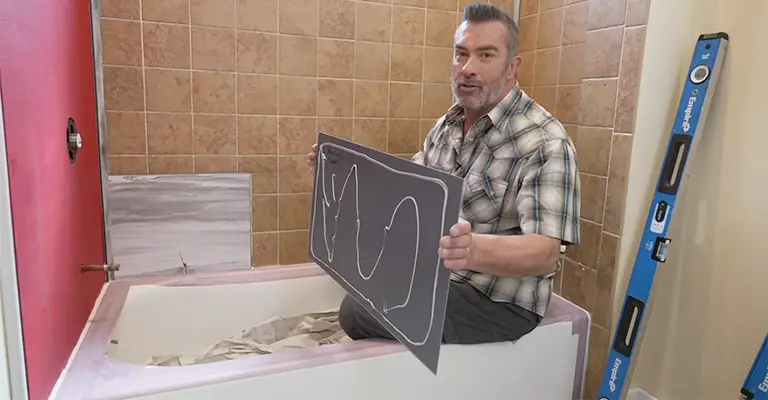
To begin with, they would endure well in a shower environment. Overlapping tiling over an existing shower may be a good solution if you desire a different appearance.
Applying tile to fiberglass is impossible, so you should stop acting on those thoughts. It is impossible to use tile on any part of the shower with a fiberglass surface, including the shower pan.
Expert Insight
According to Ed Del Grande, contractor, and author, it is impossible to add tile to a fiberglass base. It is impossible to adhere tile to fiberglass surfaces because they do not have a smooth and flat base.
Despite being inexpensive and easy to install, fiberglass showers are unsuitable for future renovations.
The tiles can loosen over time and break off the shower when you install them on it. Mold and mildew can grow from water settling underneath loose tiles.
Can You Use Peel And Stick Tile Above Shower?
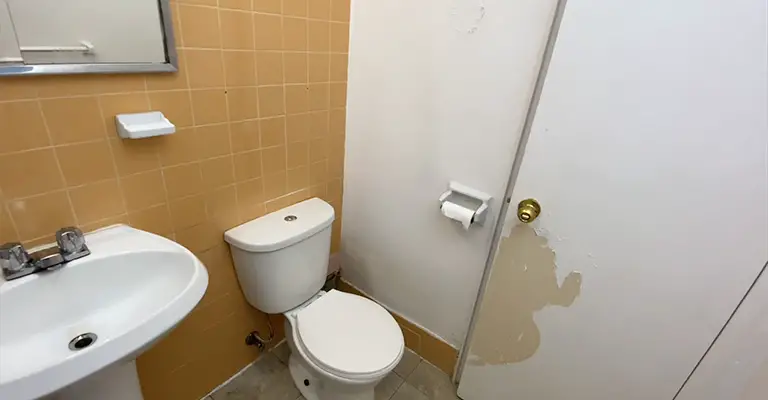
Shower walls can be covered with peel-and-stick tiles, but not the floor. Smart tiles and peel-and-stick tiles are designed to withstand water splashes in places where they will not be damaged.
Water splashes will only reach the walls of the shower, and even they will drop down. Since they’re humidity resistant and no water drops are stuck to them, they’re unlikely to cause a problem.
Considerations
You can tile the area around a shower surround made from a different material. Glue your tiles with a waterproof adhesive or a mortar-style tile glue.
The fiberglass pan is protected inside the shower by an old tarp, which also grabs any glue that drops onto it.
It takes seven days for the adhesive to cure and hold the tiles in place. Because moisture damages the adhesive, you must wait for the glue to set before using the shower.
Can I Use Peel And Stick Over Ceramic Tile In the Shower?
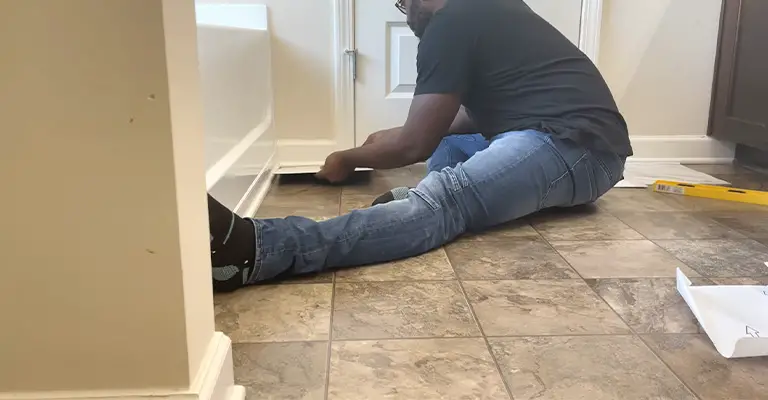
Your shower floor and walls can be covered with ceramic tiles because they are durable. There is no doubt that peel-and-stick tiles are available in a wide range of designs and patterns.
As a result, anyone would want to use these in their bathroom or kitchen. When there are already tiles, it’s not necessary. They can, however, be used above your shower if you still wish.
Furthermore, the tiles are often silky and smooth, which is perfectly suitable for the adhesive side of the tiles, so they will easily stick above ceramic tiles.
Refinishing Kits
It is possible to refinish your fiberglass shower without installing a tile using refinishing kits. In the basic kit, you will find cleaning products designed to remove stains on surfaces, including those caused by exposure to hard water.
With the cleaning products, the original fiberglass shines and is restored to its natural brightness.
In addition to the sealant, the kit also contains a clear coat. In addition to protecting the finish, the sealant prevents future stains from attaching.
Can You Put a Peel And Stick Tile Over A Fiberglass Shower?
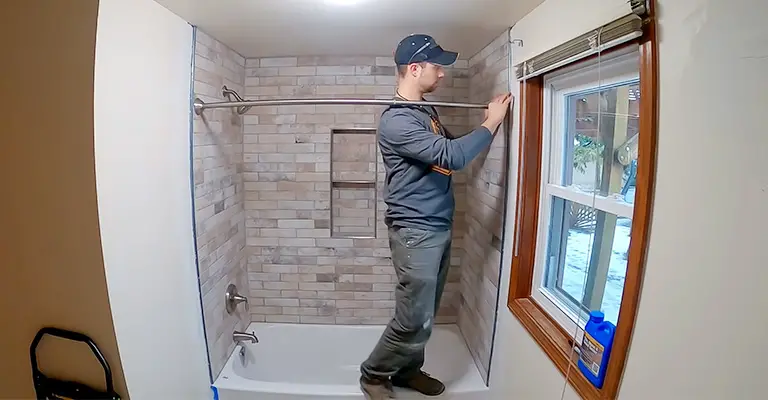
Unlike aluminum showers, fiberglass is made of woven glass fibers mixed with polyester resin, making them vulnerable to scratches and other damage.
To protect fiberglass from these particular damages, peel-and-stick tiles should be placed over it. If you have a fiberglass shower, you can cover it with peel-and-stick tile but make sure to use thicker tiles.
How Long Do Peel And Stick Tiles Last In Shower?
Their lifespan is short. In most cases, peel-and-stick tiles last for 25 to 30 years, but that is only if they are well taken care of. It will be surprising if the peel-and-stick tiles even last five years if they are constantly exposed to water.
The reason for this is that they shouldn’t! The longevity of the product will certainly be reduced if it is constantly dampened with water.
Is There A Peel And Stick Tile For the Shower?
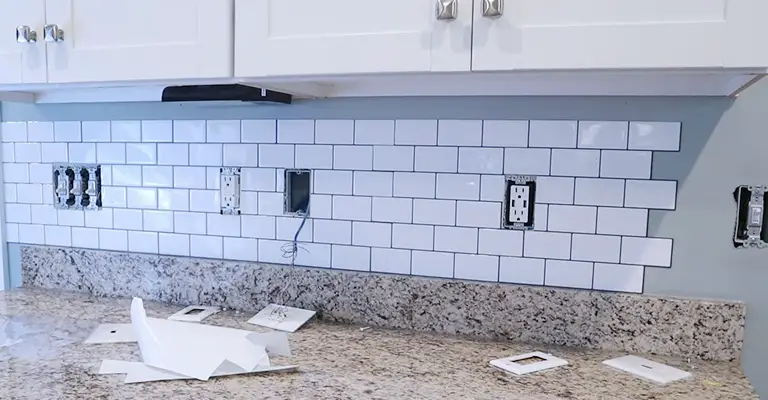
Tiles made from peel-and-stick materials are mainly used in areas that don’t undergo constant water exposure.
Water will damage the overlapping parts if they come into regular contact with water, even if they are resistant to humidity.
In other words, peel-and-stick tiles should not be used in showers, according to most manufacturers.
Further, peel-and-stick tiles for showers haven’t been made specifically for this purpose. Because adhesive tiles are not suitable for this type of application, this is the case.
Are Peel And Stick Tiles Good For The Bathroom?
It is appropriate to use peel-and-stick tiles in bathrooms. They go very well with the bathroom decor because they are resistant to heat and humidity and feature attractive 3D prints.
These tiles can be easily installed on the walls and floors of your bathroom. Putting them together won’t take more than a few minutes, and you won’t have to wait for them to dry.
How Do You Prepare A Shower Floor For Peel And Stick Tile?
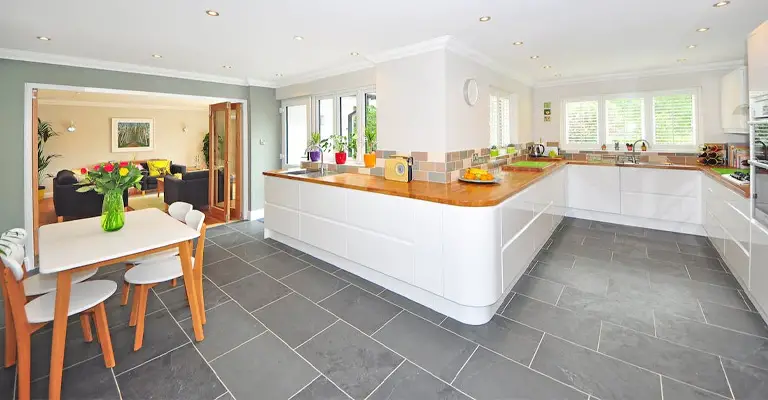
Taking tiles out of the package and sticking them in place is not a very big deal. It is either dusting the shower floor or rinsing and cleaning the floors and letting them dry.
It’s as easy as peeling the backs off the tiles and sticking them together. After peeling and sticking the tiles, you should be finished in no time. Shower tiles made from these materials should not be used in a bathroom.
However, if you consider the post-actions you may have to take, like securing the joints, go ahead! Let your imagination run wild when decorating your bathroom.
How Do You Install Peel And Stick Tile In A Shower?
Despite not being recommended, peel-and-stick tiles can still be installed in showers. In other words, installing these tiles in a bathroom is no different from installing them anywhere else.
We’ve put together a step-by-step guide to show you how to install peel-and-stick tiles in your shower.
- To begin with, you should choose a suitable set of tiles that suits your bathroom’s décor.
- Keep your bathroom clean by rinsing it and cleaning it.
- Use a cotton fabric or mop to dry them.
- Take your tiles and peel the backs off after they have dried.
- Keep a fixed pattern with the tiles when sticking them to the floor.
- To install the tiles, you will need to cut them according to the shapes of the corners.
- You can use these tiles on curvy edges because they are flexible.
- As soon as the tiles are installed, you won’t need to wait for them to dry before using the bathroom.
- In just a few seconds, you can start using your shower.
Are Peel And Stick Wall Tiles Waterproof?
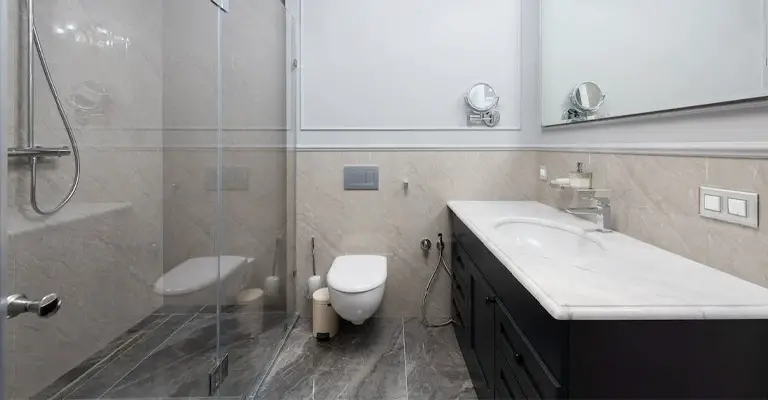
It is absolutely waterproof to use peel-and-stick wall tiles, but they are not waterproof to constant contact with water. There is a waterproof surface on the front but no waterproof surface on the overlapping side.
Water will remove these faster the more exposed they are to it. As a result, even if they are waterproof, you cannot use these in the shower.
Take advantage of their waterproof nature by using them somewhere you can benefit from their use. You can also use grout sealer, silicone caulking, or tiles cement to seal the spaces between the tiles.
How Do You Waterproof Peel And Stick Tiles In Shower?
Tiles that need to be peeled and stuck are waterproof anyway. Vinyl materials are used to make them, and they are waterproof due to the multiple layers of these materials.
The bottom can still become damp despite the joints between each tile. For the sake of securing these joints;
Use Grouting:
The process and material are also used for sealing. Similar to cement, it’s used for a variety of purposes. Wait a day for the application to dry completely after applying it.
These three methods are mostly used when it comes to waterproofing peel-and-stick tiles.
Use Tile Cement:
You can also place tile cement evenly between the joints and let it dry for a few hours. A 24-hour window would be ideal.
Use Silicone Caulking:
The surface can be smoothed with a brush after applying silicone caulking. Before using the bathroom, allow it to set completely.
Do You Have To Grout Peel-And-Stick Tiles In Shower?
In fact, yes. Peel-and-stick tiles require grouting to increase waterproofing. A grout sealer is definitely necessary for this task. Allow it to dry for at least 24 hours between the tiles; the joints.
What About Painting the Fiberglass?
Adding paint to your fiberglass shower is another way to change it without adding tiles. It is best to use epoxy paints since they adhere firmly to fiberglass and do not fade or chip.
Make your bathroom look good by choosing epoxy paint that matches your bathroom’s design. The main benefit of epoxy is that it seals and covers damaged areas, including cracked or split fiberglass.
It is important to use a foam paintbrush to ensure that the paint goes on smoothly. Regular paintbrushes can leave brush strokes in the finished shower.
A clear coat of sealant can be applied once the epoxy dries if you are concerned that it might peel off.
Final Words
Wall tiles with peel-and-stick adhesive are the best option for bathrooms and kitchens.
No matter what, you should not install it in your shower or wherever moisture is constantly present. Ensure you seal the edges and joints if you can manage it.







